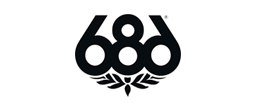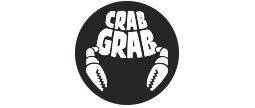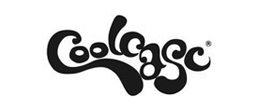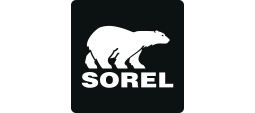A Rough Guide To Choosing The Right Snowboard
Blah, blah, blah just show me the snowboards!
When deciding upon what length of snowboard to get, there are quite a few things to consider: weight, style, type of snow being ridden, and height.
Rider Weight:
A board has a visible camber or bow throughout the center. This camber is responsible for giving the board "pop" and liveliness. When a snowboard's camber is greatly diminished or gone, it is time to get a new board. Measured in millimeters, camber generally gets higher as a board gets longer in length. This is because of the simple fact that a longer object is easier to bend than a shorter object, and to accomodate for the extra weight of a heavier rider on the longer board. Sometimes the manufacturers will also adjust the camber in relation to the stiffness of the board's longitudinal flex.
Rider Style:
While there are several different types and combinations of riding, the two most popular and easily differentiated are freeride and freestyle. A freerider is characterized as a boarder that likes, but is not limited to, ripping down the mountain in search of that perfect carve. This type of rider usually opts for a longer board to provide extra speed and edge hold. A freestyler is characterized as a boarder who prefers, but is not limited to, getting air in the park/pipe in hopes of nailing that perfect jump. This type of rider generally likes a shorter board to provide less swing weight while rotating in the air.
Type of Snow:
The type of snow a rider normally is on will also affect the length of board he or she may choose. Many snowboarders prefer to go an extra 3cm-9cm in length when riding powder as opposed to icy or packed snow. The additional length will provide extra speed and better flotation through the softer powder.
Rider Height:
As a rough guide you can use your height to decide your board's length. For freestyle boards, the top of the board should be between your collar bone and mouth. For freeride boards, the top should be between your chin and nose.
Width:
Your board's width can play a huge role in riding performance and is dependent on your boot size. At the rider's given binding angles, 1/4"-1/2" is the desired overhang of the boot's toe and heel along the side edges. If the boot does not reach the edges, the rider is unable to turn well because of a lack of edge leverage. If the boot's toe and heel overhang the board too much, the rider will experience toe/heel drag, which will also make turning difficult. Some riders can get away with a little more than 1/2" overhang depending on how far they get on edge and the type of snow they are riding on. Keep in mind that if a rider needs to go to a wider board, the length may be slightly lowered. The lower length will offset the added width and thus help to even out the actual board mass in contact with the snow. Riders with a UK size 10 or over should consider a wider model board.
Quick Snowboard Size Guide
Below is a sizing chart to better help you choose the board with the right dimensions for you. Understand that board length is very much a personal preference and that these numbers are by no means set in stone. The lengths stated are for packed snow and can be increased by 3cm-9cm if you are riding in powder.
Snowboard sizing is determined purely by weight & not your height. Don't forget if you're in UK 10+ boots you may need a wider board dependent on your chosen binding angles To work out your weight in pounds remember 1 stone = 14 lbs.
| RIDERS WEIGHT (LBS / KG) | FREERIDE OR CAMBERED BOARDS (CM) | FREESTYLE OR ROCKERED BOARDS (CM) |
|---|---|---|
| 70 / 32 | 134 | 129 |
| 80 / 36 | 137 | 132 |
| 90 / 40 | 140 | 135 |
| 100 / 45 | 143 | 138 |
| 110 / 50 | 146 | 141 |
| 120 / 54 | 149 | 144 |
| 130 / 59 | 152 | 147 |
| 140 / 63 | 155 | 150 |
| 150 / 68 | 158 | 153 |
| 160 / 73 | 161 | 156 |
| 170 / 77 | 162 | 157 |
| 180 / 82 | 163 | 158 |
| 190 / 86 | 164 | 159 |
| 200 / 91 | 165 | 160 |
| 210 / 95 | 166 | 161 |
| 220 / 100 | 167 | 162 |
| 230 / 104 | 168 | 163 |
Snowboard Construction
Flex
When dealing with flex, there are two kinds.
Longitudinal Flex:
This refers to the flex from the tip of the snowboard to the tail. A stiffer longitudinal flex is good for freeriding due to it's ability to power through crud and provide stability at higher speeds. However, the stiffer the flex, especially the nose, the harder it is to maneuver and freestyle on. Most freestylers prefer a softer flexing board because they do not need the extra speed and like a more forgiving board that can turn quickly. The main disadvantage of having a soft flex is that the board will be less stable at higher speeds, especially when on ice.
Torsional Flex
This refers to the flex from edge to edge of the snowboard. A stiffer torsional flex will hold a better edge, but is less forgiving in terms of feeling vibrations when going over bumps. A softer flex offers a smoother ride, but is not as stable on ice.
Shapes
There are three basic riding shapes. Be honest with yourself when considering what style of riding you typically will be doing.
1) Directional:
A purely directional board serves best for freeriding. It will have a softer and longer nose for easier initiation into turns, a stiffer tail to snap you out of turns, allowing no loss of speed when entering the transition between turns, and the nose will be slightly wider than the tail. Also, the hole pattern will be set back on the board to, along with the larger nose, increase the ease of turn initiation and offer better flotation in powder. This is a stable shape, but not one for a rider who rides backwards or fakie a lot.
2) True Twin Tip:
A true twin tip is symmetrical in shape from the center of the board out towards the tip and tail. It is used by boarders who mainly freestyle in the park. A twin tip has a centered stance and a forgiving, softer flex all the way through. Both of these features make for a good board to ride fakie and spin in the air.
3) Directional Twin:
This can be considered to be the hybrid of the other two shapes. A directional twin is more inclined for a boarder who likes to use the whole mountain while throwing in a bit of freestyle riding. It will usually have a soft nose and stiff tail, with a true twin tip shape. This shape works well as an all-purpose board.
Base Materials
There are three common bases used today:
Extruded:
This is the cheapest and softest of the three base types. An extruded base absorbs wax decently, but not as good as the others. It is the most easily repaired and requires little maintenance. To make this high density base, polyethylene pellets are fed into a heated extruder, where they melt and are pumped out of a die to form the base.
Sintered:
The lighter, higher end sintered base is faster and harder, meaning it takes more to damage it. A sintered base can also absorb up to five times more wax than an extruded base due to the amorphous areas in the material. The base is formed by heat pressing powdered polyethylene particles together. The particles harden where they join together, leaving microscopic void spaces between to hold the wax.
Electra:
This is the most expensive of the bases, implementing graphite or metals into the base. A faster ride is achieved because the graphite is conductive, thus dissipating static charges between the base and the snow. It is produced by pre-compounding polyethylene with a small amount of graphite, which is then heat sintered.
Core Materials
There are three main types of cores.
Foam Composite:
The use of foam in a core offers lighter weight and the ability to fine tune the characteristics of the core. Often the core is injection molded with the aid of computers, allowing the cell size to be changed and each core to have the same flex patterns. Mostly these days used in kids boards but even they tend to be wood core now..
Wood:
This is the preferred type of core by most quality companies. It tends to offer good vibration dampening and retains it's camber well. It should be noted that some higher end companies use a combination of both wood and a quality foam in their core production in order to take advantage of each materials strengths.
Sidecut
The curve or arc on a snowboard's front and back edges is called the sidecut. Imagine tracing a continuous line from the arc and completing a cirlce. From that circle you can measure it's radius (distance from center to edge). The more the arc, the deeper the sidecut, the smaller the radius Make sense? In today's snowboards, there are two sidecut types to be aware of.
Regular:
A regular sidecut is basically uniform throughtout. The deeper the sidecut of a board is, the shorter the distance it will take to turn when on an edge. A deeper sidecut will turn more quickly and is better for freestyling, but can be less stable at higher speeds. While more stable at higher speeds for freeriding, a shallow sidecut will not turn in as short of a distance when compared to a deeper sidecut.
Progressive:
A progressive sidecut utilizes two separate radii, a large one in the front of the board and a smaller in the rear. This design helps to pull you through turns better, but is not the best for riding fakie (backwards). .
Edge Construction
Full Wrap:
Virtually all manufacturers use Rockwell steel edges on their snowboards. A full wrap edge goes all the way around a board, stopping where it meets itself. This offers the greatest protection for the board.
Sidewall Construction
There are three kinds of sidewalls to consider. While difficult to distinguish between when riding, there are advantages to each of the different types of constructions.
True Cap:
A true cap is easily distinguished by the topsheet graphics continuing down to the edges on the sides of the board. This construction serves well for freestyling because it is light, offers a more responsive ride and has increased snappiness for ollieing.
Sandwich:
A sidewall board's graphics stop where the topsheet meets the sides of the board, giving way to noticeable separate walls that continue to the edges. This technique serves well for freeriding in that it tends to provide greater pressure to the edges and will not wash out as easily in deeper turns.
Half Cap:
The half cap is a combination of the other two types of construction. It's goal is to offer the best of both worlds and is usually only found on high end snowboards.
Reverse Camber (Rocker)
Reverse camber technology turns an aggressive deck into a mellow one. Less effort is required for turning than traditional camber boards and with the arched nose and tail, it is amazing in powder. Jibbing these decks is also easy, as the nose and tail are already arched off the ground. Now enjoy snowboarding without catching edges!








































































